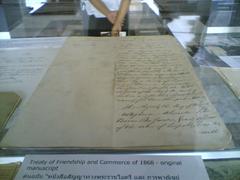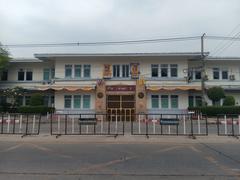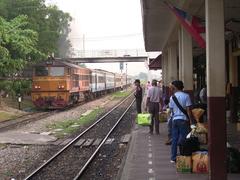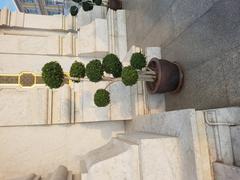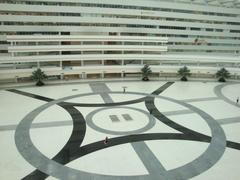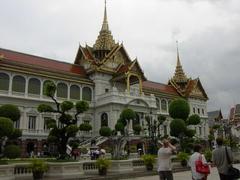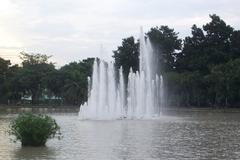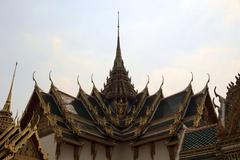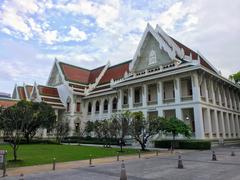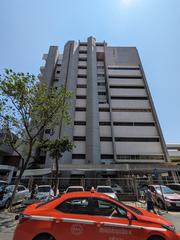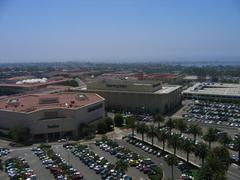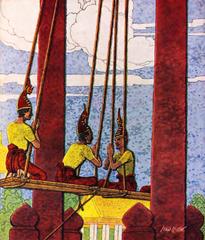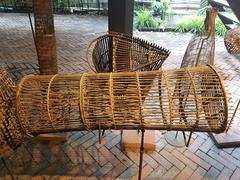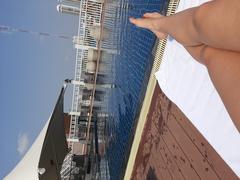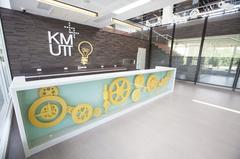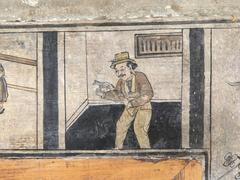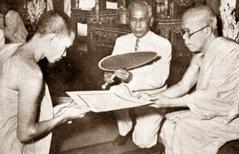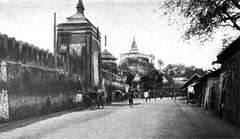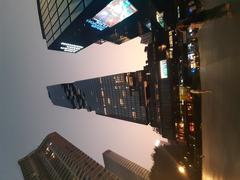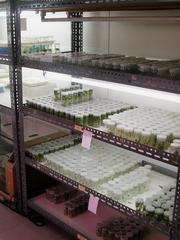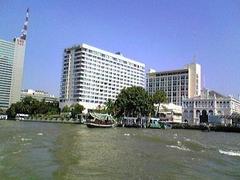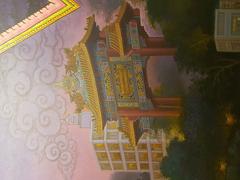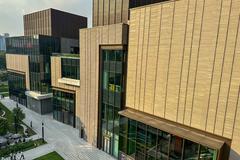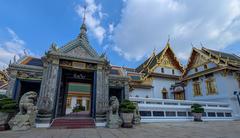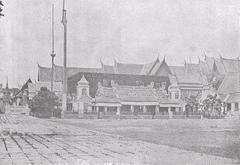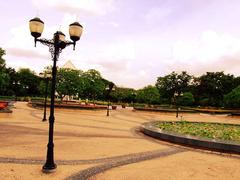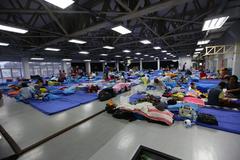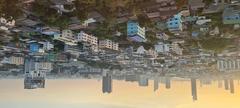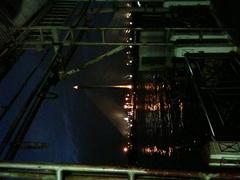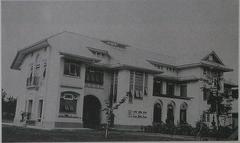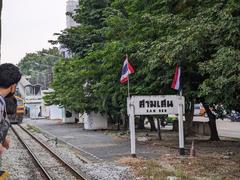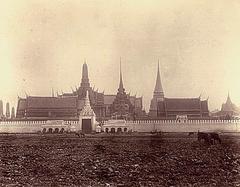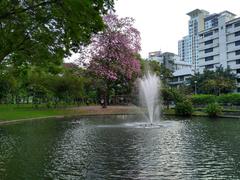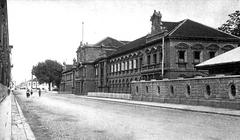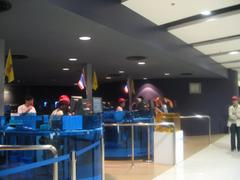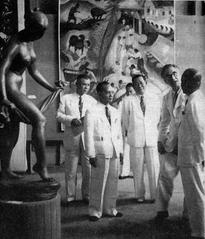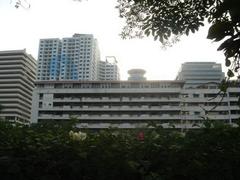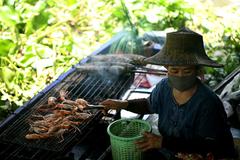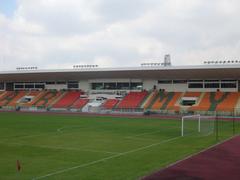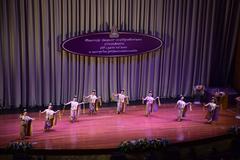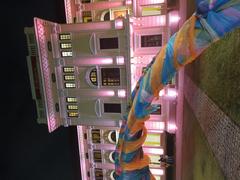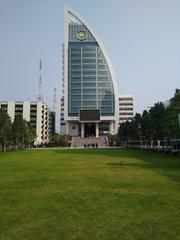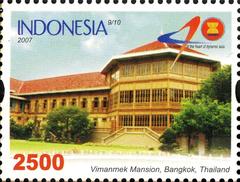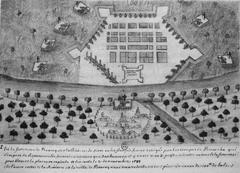Khlong Ratchamontri Bangkok: Visiting Hours, Tickets, and Travel Guide
Date: 04/07/2025
Introduction
Khlong Ratchamontri, nestled within Bangkok’s Thonburi district on the west bank of the Chao Phraya River, is a living testament to the city’s rich canal heritage and evolving urban landscape. Often overshadowed by the city’s more famous waterways, this historic canal offers an authentic glimpse into Bangkok’s layered past—when it was lauded as the “Venice of the East”—and showcases the vibrant traditions, community life, and ongoing revitalization efforts that define its present. Whether you are a history enthusiast, cultural explorer, or a casual visitor, this comprehensive guide will help you discover Khlong Ratchamontri’s origins, cultural significance, visitor information, and travel tips for an unforgettable experience (Introducing Bangkok; Discover Walks).
Table of Contents
- Origins and Historical Context
- Urban Development and Defense
- Economic and Social Significance
- Modern Transformation and Revitalization
- Landmarks and Community Life
- Visiting Information (Hours, Tickets, Accessibility)
- Nearby Attractions
- Tours and Special Events
- Visitor Tips and Etiquette
- FAQ
- Conclusion
- References
Origins and Historical Context
Khlong Ratchamontri is one of the many historic khlongs (canals) that form Bangkok’s intricate waterway network, dating back to the Ayutthaya period and expanding significantly during the Rattanakosin era under King Rama I (Introducing Bangkok). Its name, meaning “royal minister’s canal,” suggests a noble association, a tradition common in Thai canal naming. The canal was likely excavated in the late 18th or early 19th century during a period of rapid expansion as Bangkok emulated Ayutthaya’s hydraulic infrastructure, serving as a crucial artery for transport, trade, and city defense (Discover Walks; Siamrat Blog).
Urban Development and Defense
Historically, canals like Khlong Ratchamontri were integral to Bangkok’s layout and military defense. Early Bangkok featured concentric canals and moats, such as Khlong Rop Krung, which protected the city and facilitated both troop movements and the flow of goods (Siamrat Blog). Khlong Ratchamontri likely served as a secondary channel, linking residential zones with commercial hubs and connecting outlying communities to the Chao Phraya River, the city’s main artery (Tipsiti).
Economic and Social Significance
Khlong Ratchamontri played a vital role in trade and daily life. Its banks became home to wooden houses, floating markets, and temples, fostering vibrant riverside communities. Merchants, farmers, and artisans transported rice, produce, and crafts to Bangkok’s markets via the canal (Connolly Cove). The canal was also a hub for social and cultural gatherings, including festivals like Loy Krathong, where decorated baskets are floated on the water to honor water spirits (Bangkok Post; World City History).
Modern Transformation and Revitalization
By the late 19th and early 20th centuries, the construction of Western-style roads led to the decline of canal-centric life. Many khlongs were filled in, but Khlong Ratchamontri endured, shifting from a main transport route to a local irrigation and drainage channel (The Knowledge). Today, revitalization projects focus on restoring canal-side walkways, improving water quality, and promoting cultural tourism, balancing heritage protection with the pressures of urbanization (Tipsiti; MIT Resilient Cities Housing Initiative).
Community-driven initiatives, like the Baan Mankong program, have empowered residents to upgrade housing, sanitation, and public spaces while preserving the social fabric of canal-side neighborhoods (MIT Resilient Cities Housing Initiative).
Landmarks and Community Life
Temples and Shrines
The canal’s banks are dotted with serene temples and shrines, offering intimate experiences of merit-making, Buddhist rituals, and traditional Thai architecture. Unlike major tourist temples, these are tranquil spaces embedded in daily community life (World City History).
Traditional Wooden Houses
Stilted wooden homes along Khlong Ratchamontri are a window into Bangkok’s past. Residents continue to practice gardening, washing, and socializing by the water, preserving an authentic canal-side lifestyle (Bangkok Insiders).
Community Markets and Art Spaces
Weekend floating markets, canal-side cafés, and artisanal shops have emerged, breathing new life into the area. Community art projects and cultural festivals further highlight the canal’s evolving identity (Thai Wander).
Visiting Information: Hours, Tickets, and Accessibility
- Access: Khlong Ratchamontri is located in Thonburi, accessible by local roads, Chao Phraya Express Boat, and public transport (Bangkok Tourism Guide).
- Visiting Hours: The canal is publicly accessible at all times. For optimal experience, visit from 7:00 AM to 6:00 PM; temples and markets may have specific hours, typically 8:00 AM–5:00 PM.
- Tickets: No fee for the canal; guided boat tours cost 300–1,200 THB depending on duration and services.
- Accessibility: Walkways can be uneven; not all boats are wheelchair-accessible. Plan accordingly if you have mobility needs.
- Best Time to Visit: November–February is cooler, with major festivals like Loy Krathong. July is rainy; bring waterproof gear (Asia Highlights; Weather25).
- Etiquette: Dress modestly in temples; remove shoes when entering shrines; ask before photographing people (BangkokWays).
Nearby Attractions
- Wat Arun (Temple of Dawn): An iconic riverside temple near Khlong Ratchamontri (Introducing Bangkok).
- Pak Khlong Talat: Bangkok’s famous flower market (BangkokWays).
- Thonburi Canals Network: Explore additional historic waterways by boat.
Tours and Special Events
- Guided Longtail Boat Tours: Offer historical context and local insights. Book online or at major piers (Introducing Bangkok).
- Floating Markets: Operate weekends, 9:00 AM–4:00 PM, with no entry fee (Nomadic Matt).
- Festivals: Loy Krathong (November) and Songkran (April) feature vibrant canal-side celebrations (World City History).
Visitor Tips and Etiquette
- Wear comfortable shoes for uneven paths.
- Protect yourself from sun and rain.
- Carry small cash for markets and local vendors.
- Support community businesses and artisans.
- Remain respectful in religious sites and local homes.
FAQ
Q: What are the visiting hours?
A: The canal is accessible all day; attractions generally open 8:00 AM–6:00 PM.
Q: Is there an entrance fee?
A: No fee for the canal; tours and some sites may charge.
Q: How do I get there?
A: By Chao Phraya Express Boat, BTS/MRT plus taxi, or local bus (Bangkok Tourism Guide).
Q: Is it accessible for people with mobility issues?
A: Accessibility is limited; check with tour providers for options.
Q: Is it safe for solo travelers?
A: Yes, especially during daylight; exercise standard precautions (Qeepl).
Conclusion
Khlong Ratchamontri encapsulates the enduring spirit of Bangkok’s canal culture, offering a rare window into the city’s layered past and dynamic present. With its blend of historic architecture, vibrant markets, cultural festivals, and resilient communities, the canal is a must-visit for anyone seeking an authentic Bangkok experience. Ongoing preservation efforts ensure that this heritage site remains accessible and meaningful for future generations.
Plan your visit using this guide, explore neighboring attractions, and support local communities to help sustain Bangkok’s unique waterway heritage. For the latest updates, consider downloading the Audiala app and following trusted local sources.
References
- Introducing Bangkok
- Discover Walks
- Siamrat Blog
- Tipsiti
- Connolly Cove
- Bangkok Post
- MIT Resilient Cities Housing Initiative
- World City History
- Bangkok Tourism Guide
- BangkokWays
- Nomadic Matt
- Thai Wander
- Qeepl
- Asia Highlights
- Weather25
